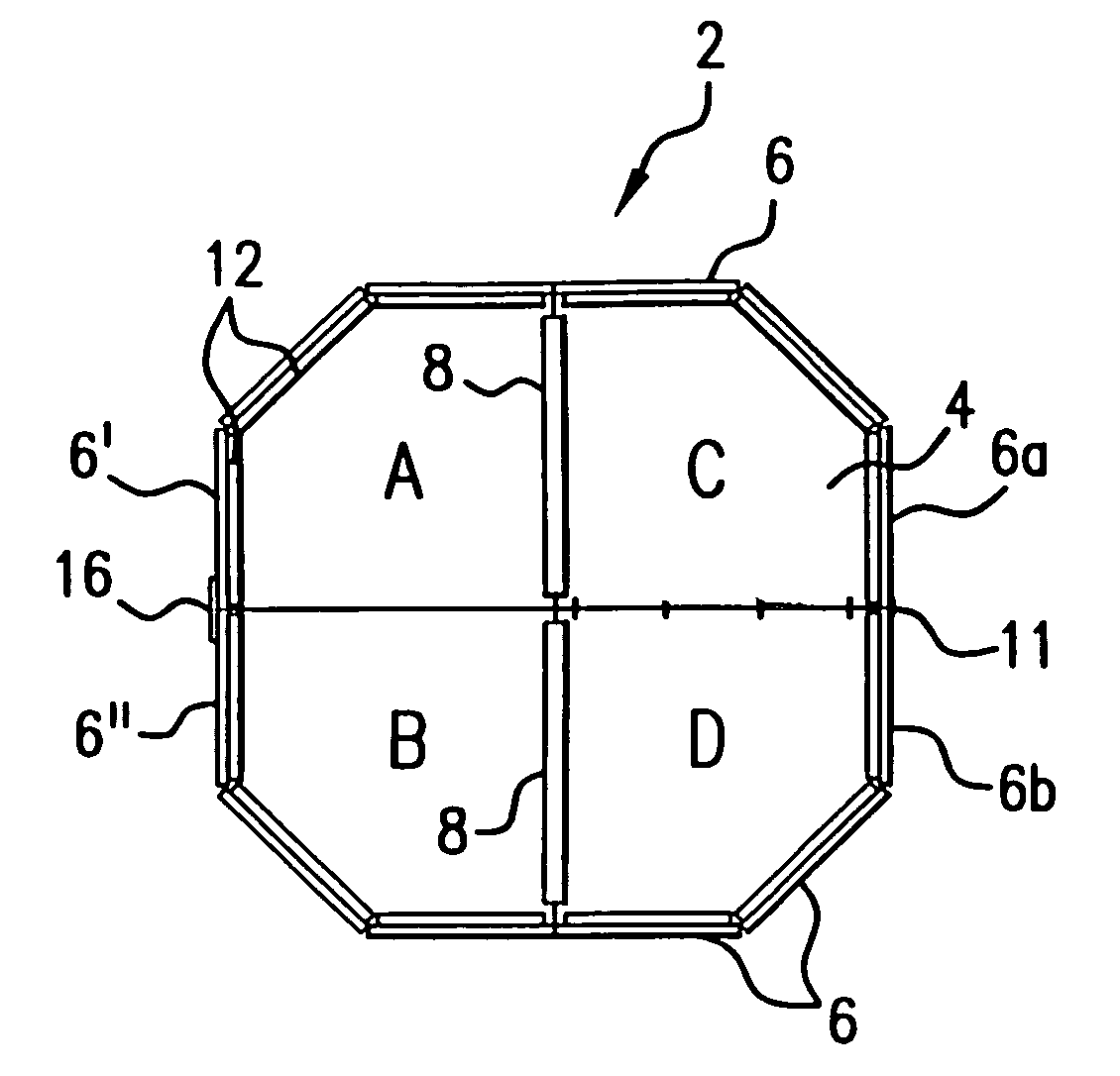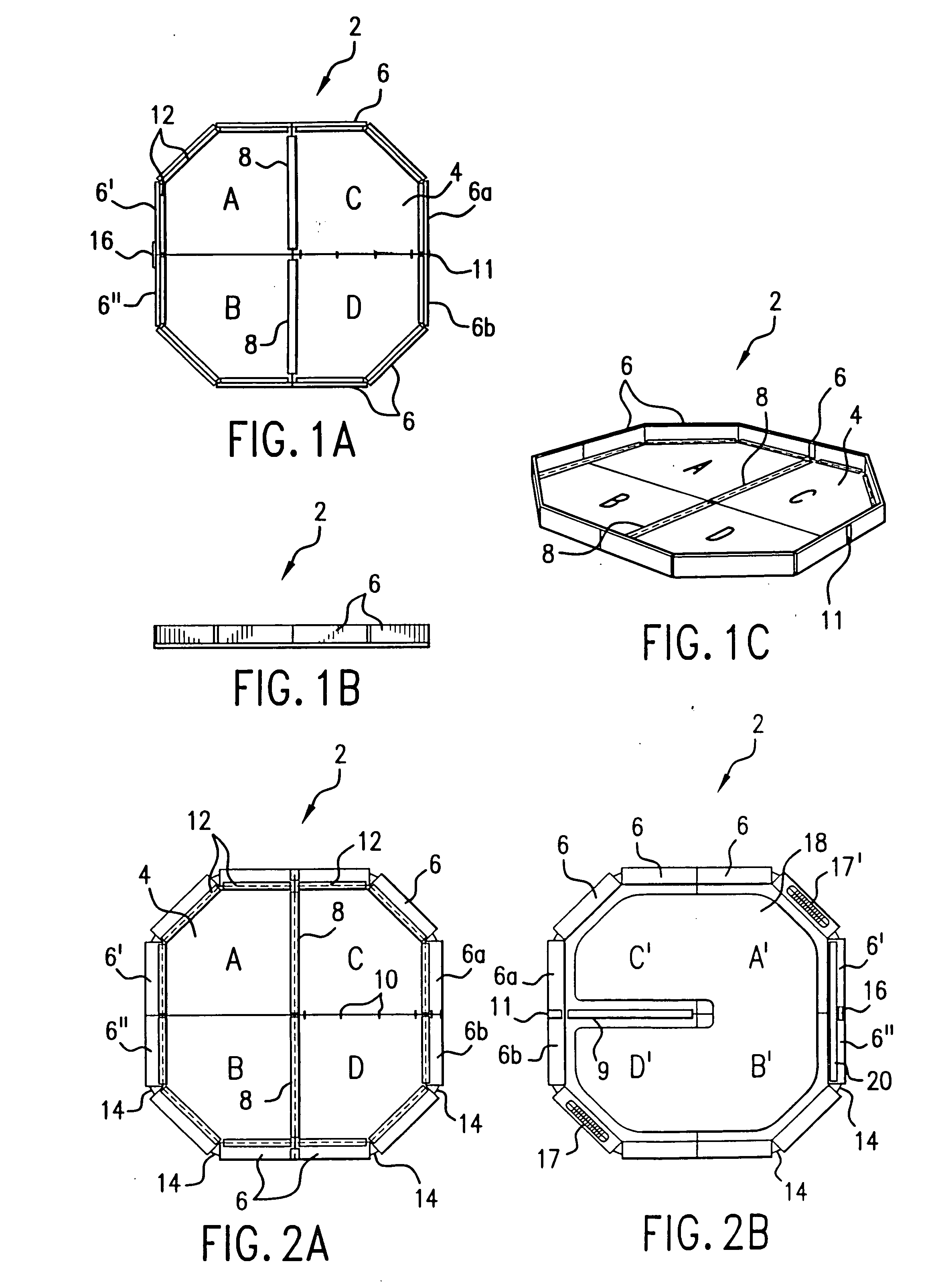Collapsible serving tray
a serving tray and collapsible technology, applied in the field of food and beverage service, can solve the problems of poor rigidity, difficult storage, and large size of traditional trays, and achieve the effects of preserving rigidity across the joint, sufficient rigidity, and improving shear strength
- Summary
- Abstract
- Description
- Claims
- Application Information
AI Technical Summary
Benefits of technology
Problems solved by technology
Method used
Image
Examples
embodiment 1
[0182] Referring to FIGS. 1A, 1B and 1C, the folding tray 2 according to the present invention is shown in orthogonal top view and side views respectively. FIG. 1C shows the tray 2 in an oblique view. As shown in FIG. 1A, the flat base portion 4 of the octagonal folding tray 2 comprises four quadrants that are labeled A, B, C and D in the figure, a labeling convention that has been chosen as an aid in describing the novel method by which the tray is folded to one quarter of its fully deployed, in-service size. In FIG. 1A, quadrant A of the base portion 4 is joined to the quadrant C by a hinge 8, and the quadrant B is the also joined by a another hinge, also denoted by 8, to the quadrant D. Quadrants C and D are also joined by a hinge. The edge portions 6 of the tray are visible in both the top and side views. In this embodiment, the edge portions 6 comprise a plurality of components, in this embodiment 12, which are connected by hinges 12 (only representative hinges identified in th...
embodiment 2
[0189] A second embodiment of a folding tray 3, in rectangular form, is shown in top view in FIG. 4A. In this embodiment, there are no vertical edges around the perimeter, as in the first embodiment. A side view of the tray 3 is shown in FIG. 4B, wherein are visible in respective straight-on and side views two latching mechanisms 30a and 30b. FIG. 4C shows the bottom side of the base portion 32.
[0190] When the three latching mechanisms 30a, 30b and 30c are oriented such that the planes of the latching mechanisms are each more or less perpendicular to the plane of the base portion 32, they maintain the base portion, which is comprised of four quadrants labeled W, X, Y and Z, in a rigid and flat deployed position that is fully usable as a tray of the sort used to carry drinks in a restaurant. The three two-part latching mechanisms 30a, 30b and 30c are connected to the base portion 32 by respective hinges 34a, 34b and 34c. Each of the three latching mechanisms also has hinge portions ...
PUM
 Login to View More
Login to View More Abstract
Description
Claims
Application Information
 Login to View More
Login to View More - R&D
- Intellectual Property
- Life Sciences
- Materials
- Tech Scout
- Unparalleled Data Quality
- Higher Quality Content
- 60% Fewer Hallucinations
Browse by: Latest US Patents, China's latest patents, Technical Efficacy Thesaurus, Application Domain, Technology Topic, Popular Technical Reports.
© 2025 PatSnap. All rights reserved.Legal|Privacy policy|Modern Slavery Act Transparency Statement|Sitemap|About US| Contact US: help@patsnap.com



